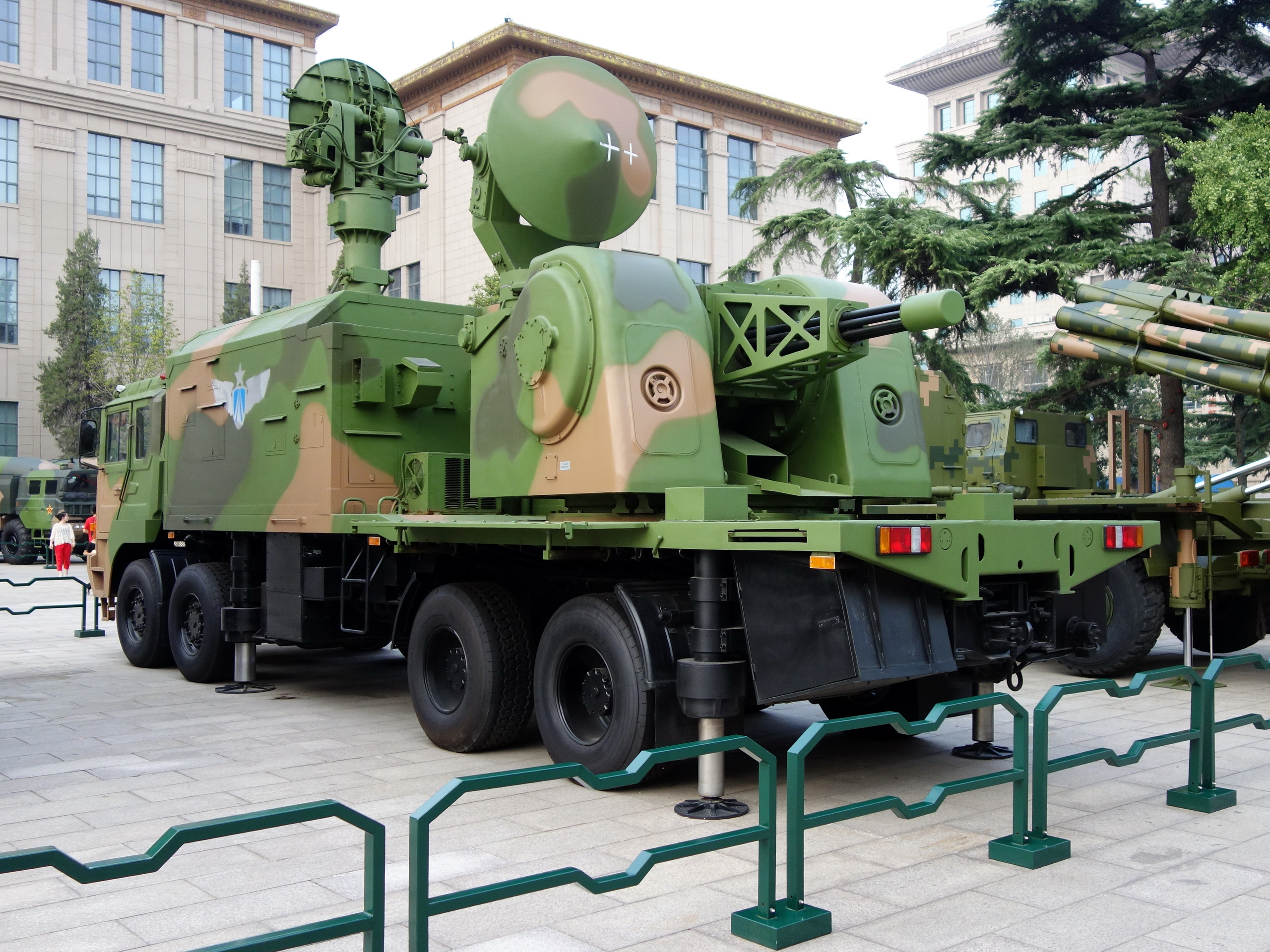T
Turko
Guest
The Ludun-2000 is a Chinese copy of the Thales Nederland Goalkeeper 30 mm close-in weapons system (CIWS) mounted on the rear a 8 x 8 single cab flat bed truck and generator and system container behind the cabin.
The Type 730B gun is a copy of the General Electric GAU-8 30 mm x 173 mm seven-barrel Avenger gun used on the A-10. It fires at 4,200 rounds-per-minute with the APDS round having a muzzle velocity of 1,150m/sec and the HE cartridge of 920m/sec. There are two 500 round cylindrical magazines either side of the gun.
The system can intercept targets flying at a velocity of Mach 2 or below. Although a target can be optically tracked up to 18 km, a cruise missile with a radar cross section of approximately 0.1 m2 can be detected at 12 km, optically tracked using a charge coupled device at five km. The gun has a maximum effective range of 2.5 km, its intercept engagement range between 1000 to 1,500 m and a maximum ground range of 3,000 m. The response time of 9.8 sec is given the system is able to simultaneously track and prioritise 48 targets.
In the anti-aircraft role, the Ludun-2000 system is claimed to be as effective as a battalion of 18 Type 65 twin 37mm anti-aircraft guns. In the counter rocket and mortar (C-RAM) role, it is claimed that when cued by an AN/TPQ-37 Block 1B Firefinder artillery locating radar of between 60 to 70 percent of 60 mm and 81 mm mortar rounds, and there is enough ammunition for 50 engagements against mortars and rockets. The PLA employs the SLC-2 which is an improved clone of the TPQ-37 series.
By design, the LD-2000 is essentially a land based derivative of the existing PLAN Type 730 CIWS, itself modelled on the closed loop tracking US Phalanx CIWS and EU Goalkeeper CIWS.

Production vehicles are intended to be based on the Wanshan WS-2400 chassis, common to the HQ-9 SAM system. The engagement and tracking radar as yet undesignated, operates in the Ku-Band.
More recent imagery depicts the addition of a mast mounted search radar and six launch tubes for the TY-90 Surface-to-Air-Missile.
While intended to fulfill much the same role as the Russian Pantsyr S1 / SA-22 system, the LD-2000 is hampered by older technology acquisition and engagement radar technology in comparison with its Russian competitor. The cited use of SLC-2 / AN/TPQ-37 Block 1B Firefinder artillery locating radar indicates an intent to address this capability limitation. This radar is however optimised for the CBR role, which differs in geometry from the Counter-PGM roles.
This will limit the system's ability to acquire and track low signature targets, especially guided weapons. To date no evidence has emerged showing the integration of extant PESA air defence engagement radars such as the H-200 or SJ-231 with the LD-2000 system, both of these radars providing the power-aperture performance and beam-steering agility required to make the LD-2000 genuinely effective in killing salvoes of high angle low signature smart munitions. A single H-200 or SJ-231 supporting three, four or six LD-2000 fire units makes for a formidable point defence capability.
Current acquisition radar technology does not preclude further development of this system as China's industry eventually masters PESA and AESA antenna technology. A mature LD-2000 variant has the potential to be a very effective terminal defence weapon against supersonic and subsonic guided weapons.
